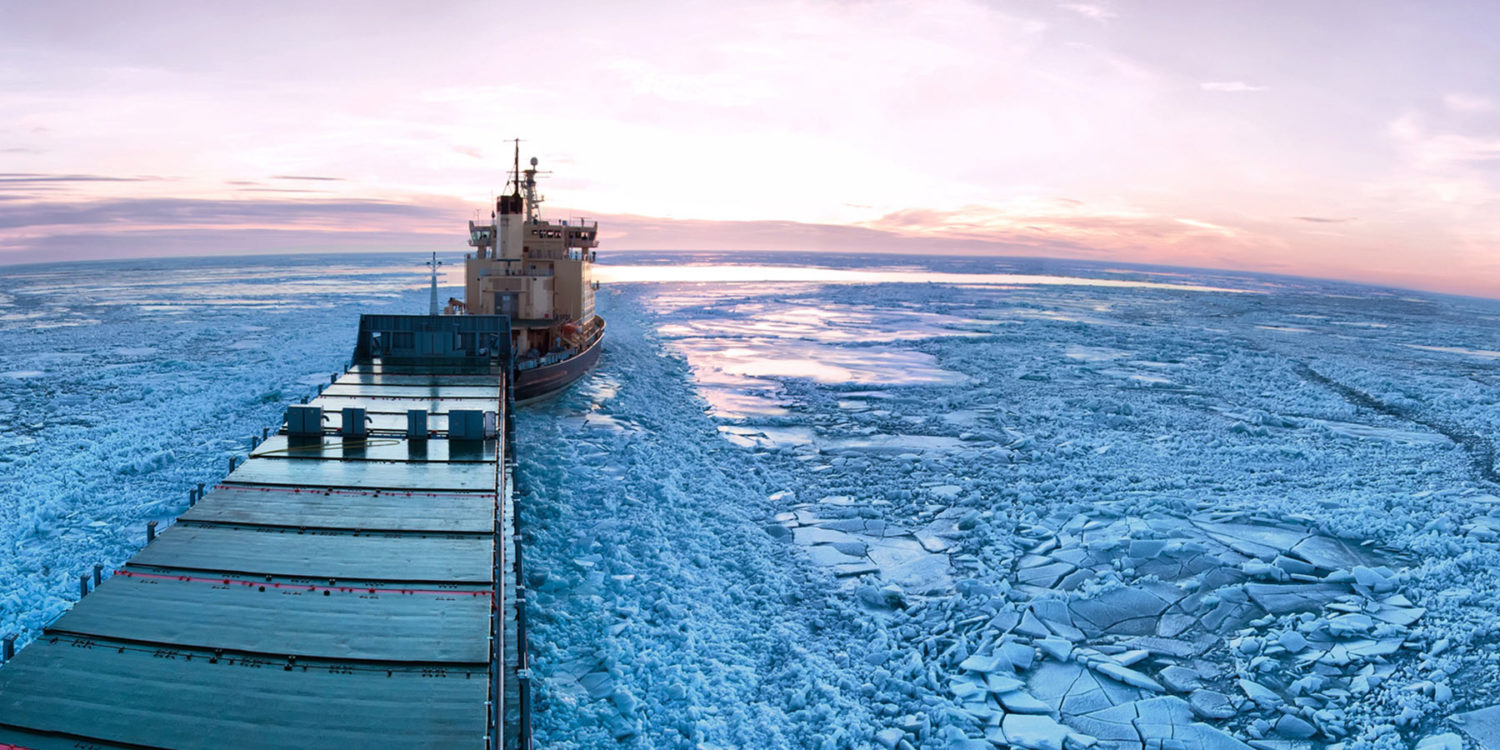
Time for the International Maritime Organization to Address Arctic Shipping Emissions
Among the agenda items to be considered will be the development of measures to reduce the risks of the use and carriage of heavy fuel oil (HFO) as fuel by ships in Arctic waters.
Consideration of the use of HFO in the Arctic by the IMO is particularly timely, given the drastic changes we have seen in the Arctic over the past few months. For example, in February of 2018, the Bering Sea lost roughly half of its sea ice cover in just two weeks and had more open water than ever measured this time of year. In addition, the northernmost weather station in the world at the northern tip of Greenland, experienced more than 60 hours of temperatures above freezing before the end of February. The previous record at this station was 16 hours of temperatures above freezing by the end of April in 2011
To most of the world, this level of Arctic warming is a scary reminder that we are already experiencing the consequences of climate change.
However, the shipping sector is eager to take advantage of a warming Arctic. In December of 2017, the Eduard Toll became the first ship to sail through the Northern Sea Route during winter, without the assistance of an icebreaker. Vladimir Putin has also emphasized Russia’s interest in developing Arctic shipping, stating that Russia anticipates traffic on the Northern Sea Route to increase tenfold to 80 million tons by 2025.
Expected increases in Arctic shipping also means an increase in the amount of HFO burned and carriage as fuel by ships in Arctic waters. HFO, which is the world’s dirtiest and most polluting ship fuel, is a tar-like residual waste from the oil refining process. There are numerous risks associated with the use of HFO in the Arctic:
- harmful emissions that negatively impact the local and global climate;
- emissions that are harmful to human health;
- risks to the Arctic marine environment from an HFO spill;
- threats to the food security, livelihoods and way of life of Arctic communities.
With regard to the emissions associated with the use of HFO as marine fuel, the combustion of HFO produces high levels of pollutants such as particulate matter, black carbon, sulphur oxide, nitrogen oxide, all of which have been linked to an increased risk of heart and lung disease as well as premature death. Black carbon is also a critical contributor to human-induced climate warming, especially in the Arctic.
Black carbon influences the Arctic climate through two mechanisms. First, when black carbon is in the air, it directly warms the Arctic atmosphere by absorbing solar radiation that would otherwise have been reflected to space. Second, when black carbon is deposited on light-colored surfaces, such as Arctic snow and ice, it reduces the amount of sunlight reflected back into space. This process results in the retention of heat and ultimately contributes to accelerated melting of Arctic snow and ice. A recent study found that black carbon emitted from in-Arctic sources has five times the warming effect than black carbon emitted at mid-latitudes.
Given expected increases in Arctic shipping, as well as the risks posed by using HFO as marine fuel, CATF has been working with a coalition of environmental organizations around the world to urge the IMO to implement a ban on the use and carriage of HFO as fuel by ships in the Arctic.
A number of countries, including Finland, Germany, Iceland, Netherlands, New Zealand, Norway, Sweden and United States, have demonstrated strong leadership on this import issue and have formally proposed a mandatory ban of HFO use and carriage for use as fuel by ships in Arctic waters to the IMO by 2021. The submission of this proposal has catalyzed some of the political momentum needed for the IMO to ultimately implement a HFO ban in the Arctic.
However, it is also likely that a number of other, less comprehensive, HFO mitigation measures will ultimately be considered by the IMO. These measures could range from navigational measures (i.e. routing measures, areas to be avoided, mandatory reporting systems, and mandatory pilotage) to operational measures (i.e. improved HFO fuel quality, slower steaming speeds, increased aids to navigation, and enhanced HFO spill and release detection) to simply increasing training and awareness of the hazards of operating in the Arctic. Many of these potential mitigation measures would serve to protect the Arctic marine environment regardless of the type of fuel used onboard a ship (i.e. LNG, distillate or HFO). But none of them will adequately address the black carbon emissions associated with burning HFO or eliminate the risk of an HFO spill.
For this reason, an HFO ban is the most effective mitigation strategy to fully address all of the risks posed by the use of HFO in Arctic waters.
Given the number of mitigation measures likely to be considered by the IMO, there is still substantial work to be done. However, CATF will continue to put pressure on the global shipping community to implement a full ban on the use and carriage of HFO as fuel by ships in the Arctic.



